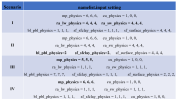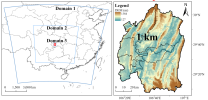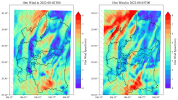Dear WRF community,
I am running several WRF-UCM 4.6.1 simulations to evaluate near-surface air temperature at 2 meters. Despite testing multiple combinations of physics parameterizations, I still observe a significant positive bias compared to observations, especially during the daytime. The model tends to overestimate maximum temperatures and underestimates nighttime cooling.
Please see the attached figure below, which shows the diurnal variation of 2-meter temperature averaged over multiple stations. The black line represents observations, while colored lines represent four different WRF simulation scenarios.


My Questions:
Any suggestions or insights would be greatly appreciated!
I am running several WRF-UCM 4.6.1 simulations to evaluate near-surface air temperature at 2 meters. Despite testing multiple combinations of physics parameterizations, I still observe a significant positive bias compared to observations, especially during the daytime. The model tends to overestimate maximum temperatures and underestimates nighttime cooling.
Please see the attached figure below, which shows the diurnal variation of 2-meter temperature averaged over multiple stations. The black line represents observations, while colored lines represent four different WRF simulation scenarios.


My Questions:
- What other physics options or settings would you recommend trying to reduce the overestimation of daytime temperature?
- Is it possible that the PBL scheme is too diffusive during stable conditions (nighttime), and if so, which PBL scheme is more suitable for urban or semi-urban areas?
- Are there any known combinations that particularly improve 2m temperature biases in warm or tropical environments?
Any suggestions or insights would be greatly appreciated!


